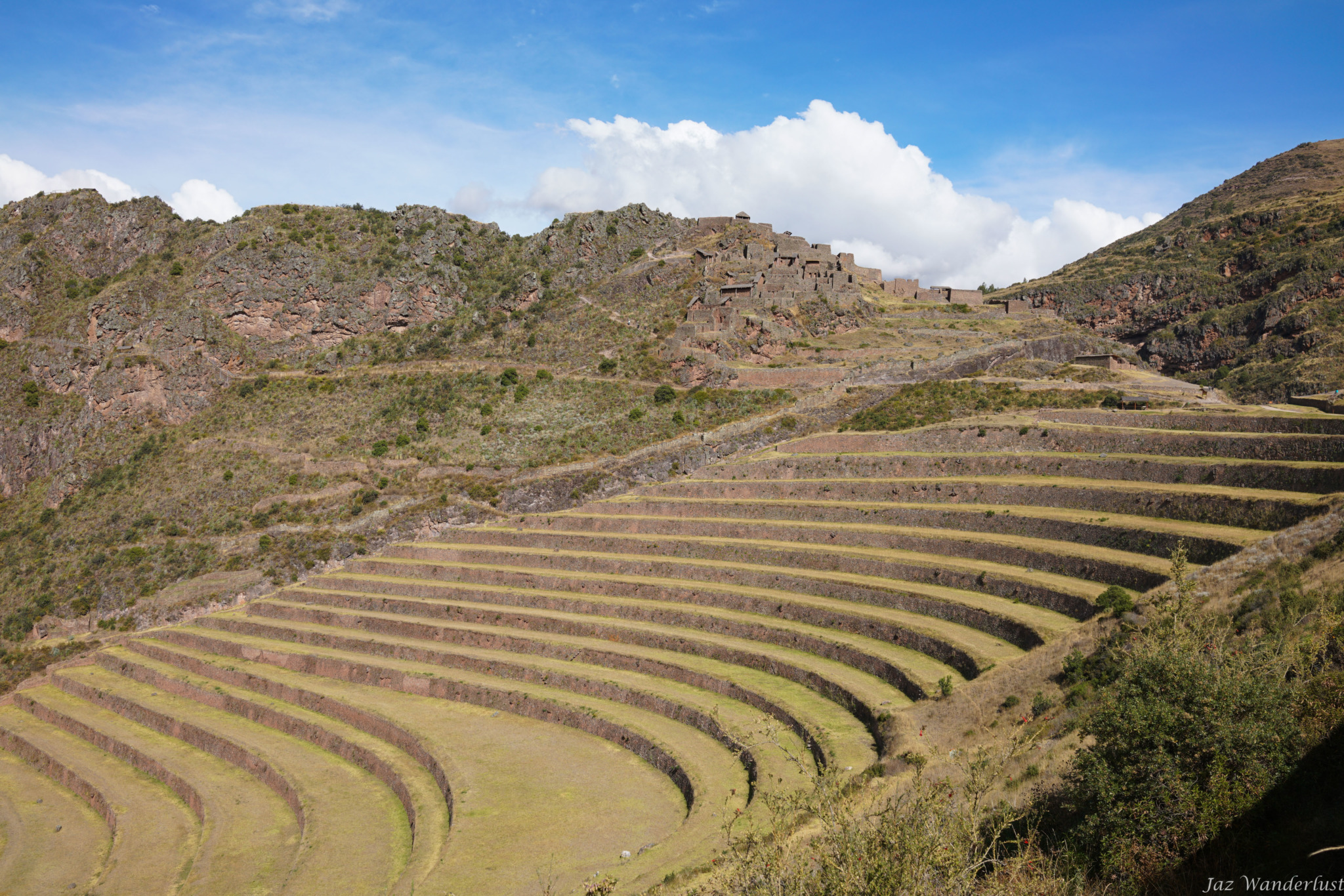This morning, we started our journey through the Sacred Valley, which is a valley in Peru’s Andean highlands. The Sacred Valley was formed by the Urubamba river and contains numerous archaeological remains and villages. The tour guide picked us up at 7:30 A.M and drove us to Sacred Valley.
Pisac
Our first stop was the Pisac archaeological site, which overlooks the town of Pisac far below. To enter Pisac, we needed to have the Cusco Tourist Ticket (Boleto Turistico). If you have a couple days in Cusco, be sure to buy the Boleto Turistico Cusco Parcial III as this allows you to visit several Sacred Valley archeological sites: Pisac, Ollantaytambo, Chinchero and Moray. It’s valid for 2 days and cost S/.70 ($25 USD). The tickets can be purchased at the entrance to any of the sight or in Cusco at the main BTC office.



We then headed to the market, which is home to Peru’s largest arts and crafts market. There were sweaters and scarfs made from alpaca, which is Peru’s most distinct herd animal. Alpaca fleece is prized for its softness and sheen. Artisans also sell paintings, handmade jewelry, and carved gourds. Before purchasing, remember to do a little bit of bargaining first.



Afterward, we stopped in Urubamba for buffet lunch. Urubamba is a town right in the middle of the Sacred Valley. It was a beautiful view since we were surrounded by the green slopes of the Andes.


Ollantaytambo
From Urubamba, we traveled up into the mountains to visit the ruins of Ollantaytambo. It is an ancient Inca temple and fortress as well as a village in Peru built in the 1400s. Ollantaytambo is approximately 60 miles north of Cuzco. An incline separates the ruins from the modernized part of the town. A climb up the 200 steep steps to the top offers a close up look at the remains of several fountains and temples. Some of the buildings are unfinished, abandoned upon the arrival of the Spanish.



Chinchero
Our last stop for the tour was at the colonial church in Chinchero. To enter Chinchero, we had to show our Cusco Tourist ticket at the government check point. The church was built on top of the remains of an Incan palace and is surrounded by Inca terracing. The inside of the church was beautiful filled with paintings and decorations. Photography is not allowed inside the church.

We didn’t get back to our hotel till almost 6:30 P.M. It was a long day, but we were glad that we got to visit Sacred Valley.
Check out my other posts on what I did in Lima, Cusco and Machu Picchu.

